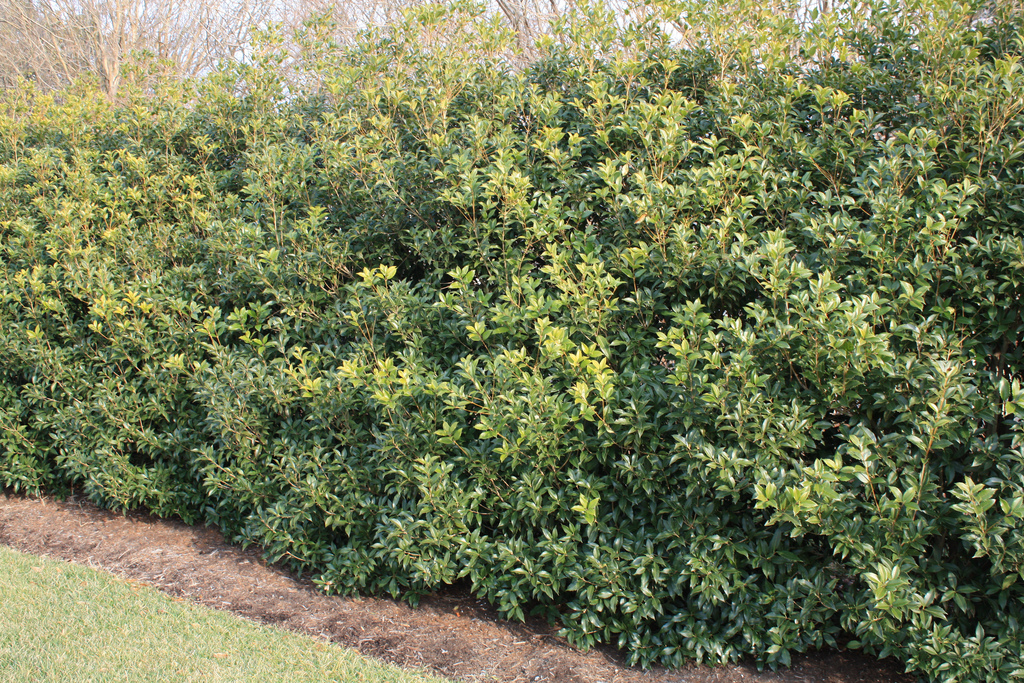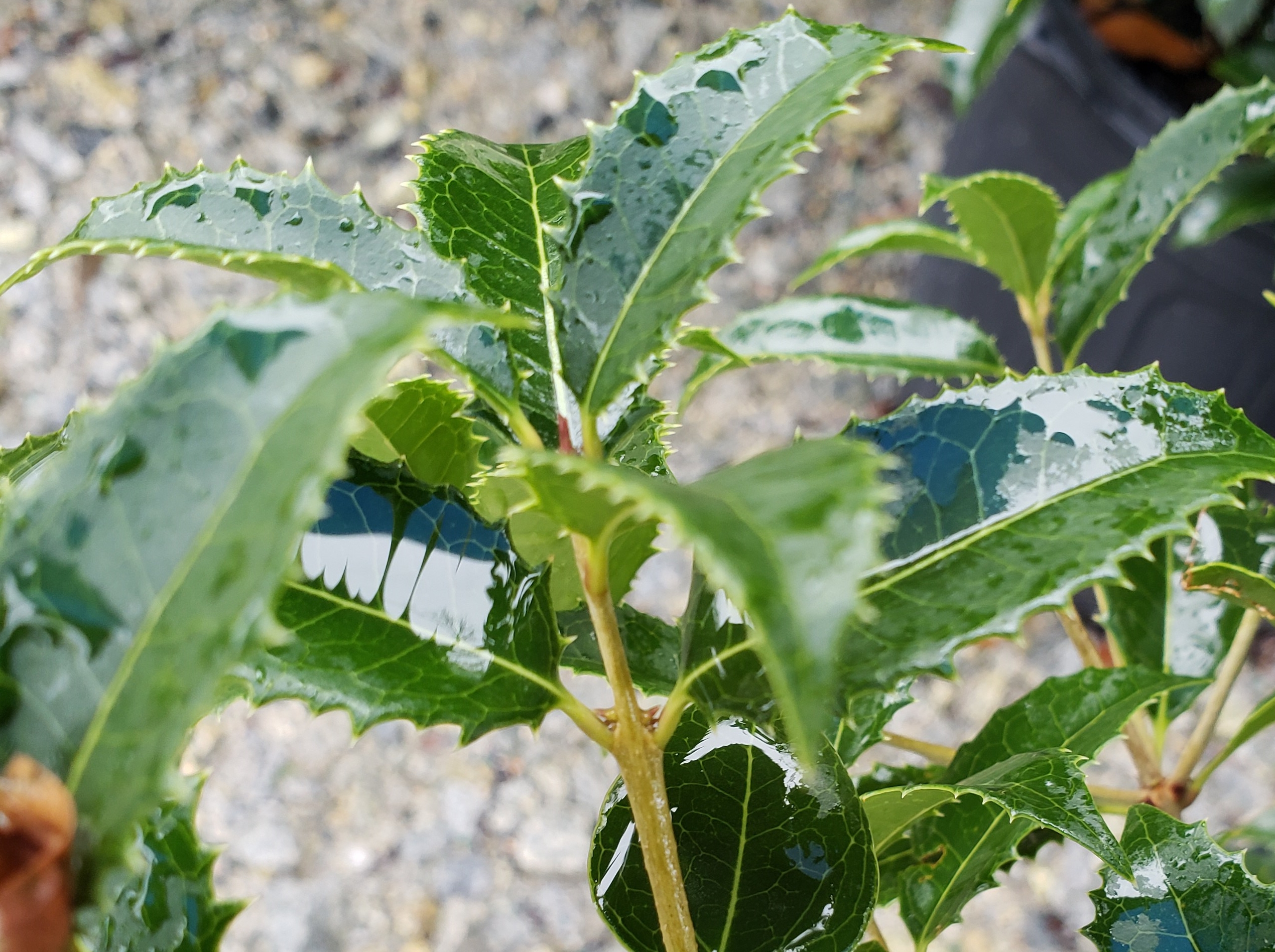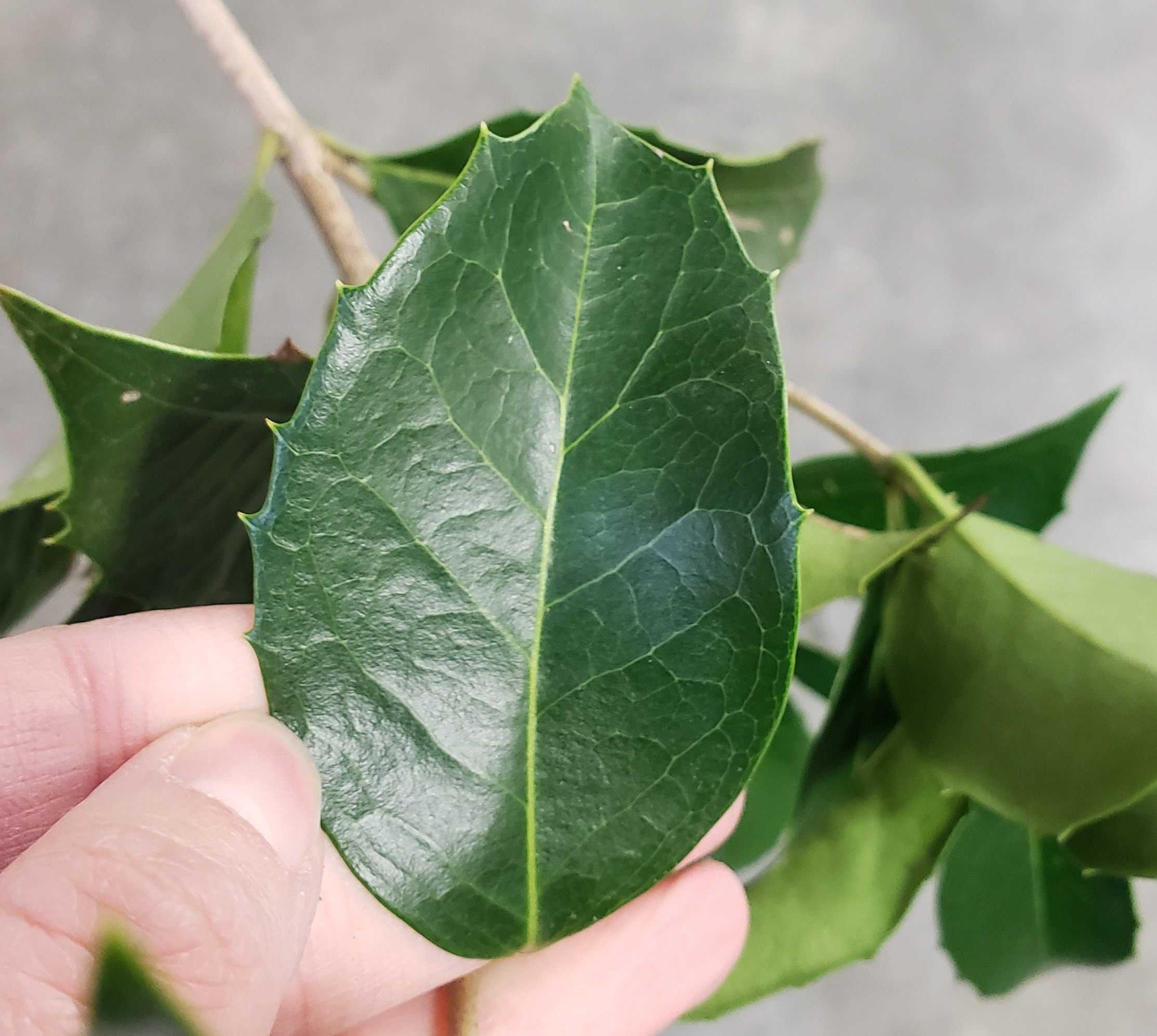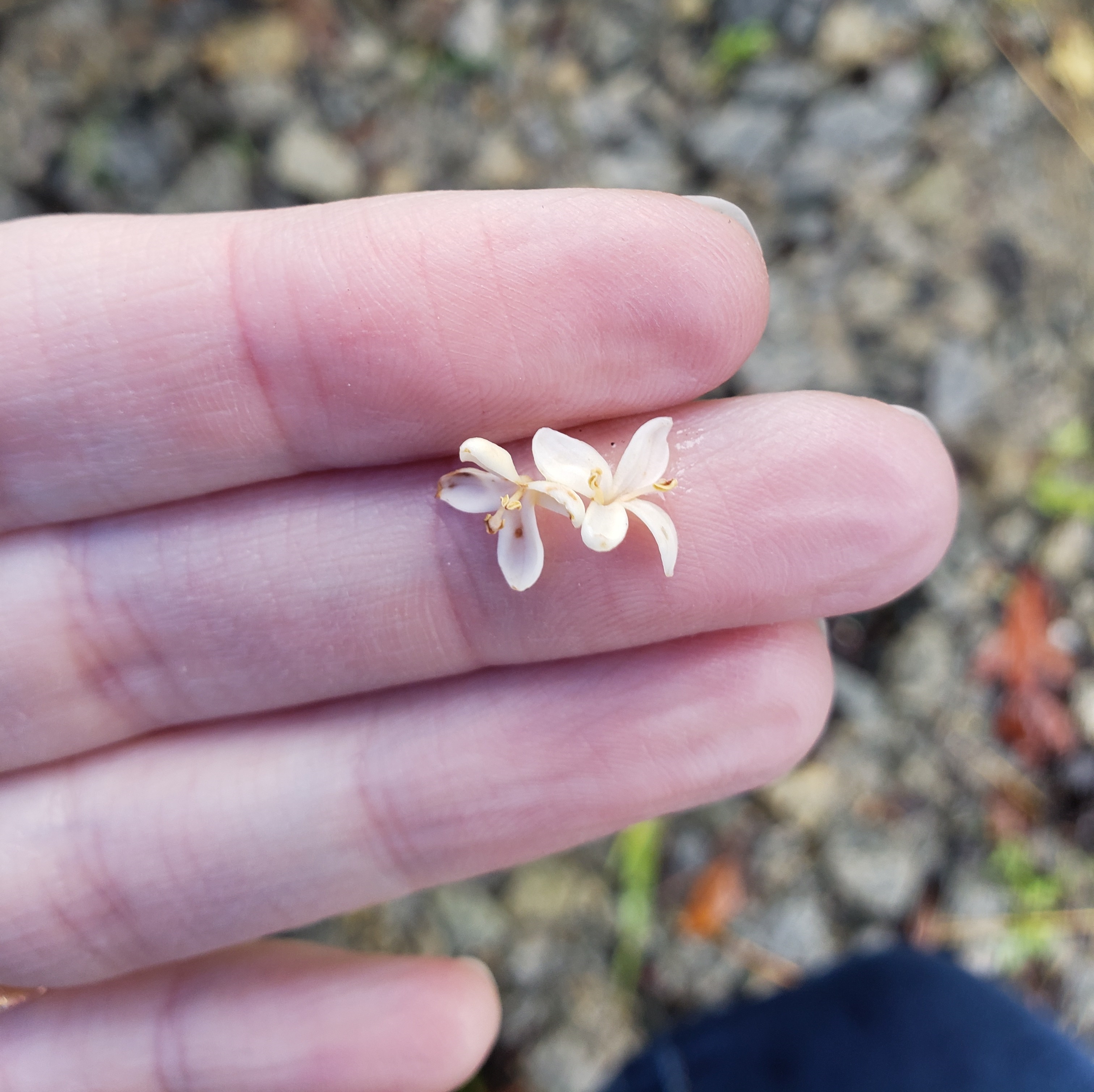Today for #TeachingTuesday, we will cover two species of tea olive: Osmanthus fragrans and Osmanthus x fortunei. Tea olive is also known as false holly, or simply 'osmanthus.' Personally, tea olive is one of my all-time favorite shrubs. I have fond memories of walking across the NC State campus in late October and smelling that sweet, sweet fragrance, then looking around trying to find the large shrub it was coming from (sometimes more than 50 feet away!). Plant these evergreen shrubs near windows, porches, and outdoor living areas to enjoy the enchanting scent through the fall. The shrubs/small trees are long-lived and virtually free of pests and diseases.
Osmanthus fragrans - Fragrant Tea Olive
The fragrant tea olive is, unsurprisingly, the most fragrant Osmanthus species. However, it is also the least cold hardy, and is only marginally successful in zone 8 (it prefers zones 9-11). For reference, Raleigh-Durham is zone 7b/8a, Wilmington is zone 8a, and Charleston, SC is zone 8b/9a. We see it more on coastal properties, but it can also be grown as a container plant, or in sheltered locations with winter protection.
There is also an orange-flowered form, Osmanthus fragrans f. aurantiacus, which is slightly more cold-tolerant than the species.
Osmanthus x fortunei - Fortune's Tea Olive
Fortune's osmanthus, or Fortune's tea olive, is the most common species used in our area. It is a hybrid between Osmanthus fragrans and Osmanthus heterophyllus (false holly). Like its parent, it has small, white, highly fragrant flowers, and blooms in October-November, but is much more cold-hardy, surviving throughout zone 7. It has been around in the western horticultural trade since 1856, when it was introduced to Britain from Japan.
Fortune's tea olive can be grown as a shrub, a small- to medium-sized tree, or even a hedge. Its spiny leaves make it very resistant to deer damage, and it is also drought tolerant, and somewhat tolerant to shade and salt.
 A large screen of Osmanthus x fortunei
A large screen of Osmanthus x fortunei
ID Tips
- Although at first glance many tea olive species may look similar to hollies, there is an easy trick to tell the difference: tea olive leaves are always in opposite pairs, while holly leaves alternate along the stem.
- Fragrant tea olive leaves are slightly larger and longer than Fortune's tea olive leaves, and will have either entire margins (meaning smooth edges) or dentate margins (meaning finely toothed edges). The tip of the leaf is not spiny.
- Fortune's tea olive leaves are smaller and more oval-shaped, and will have a spiny tip at the point of each leaf. There are three kinds of leaves on Fortune's tea olive: the juvenile leaves (leaves near the base of the plant), which will have 10-12 triangular, spiny teeth on each side (the younger, the spinier). The mature leaves, which are found on the upper branches of the shrub/tree, will have smooth edges, but will still have the spiny point at the tip. In the middle, there will be leaves that have a few spines near the tip of the leaf, but smooth edges near the base.
Do you have more tips for identifying tea olives? Leave a comment!
 All Osmanthus species have leaves in opposite pairs.
All Osmanthus species have leaves in opposite pairs.
 Note the spines disappearing toward the base.
Note the spines disappearing toward the base.
 Individual flowers are very small, but very fragrant!
Individual flowers are very small, but very fragrant!